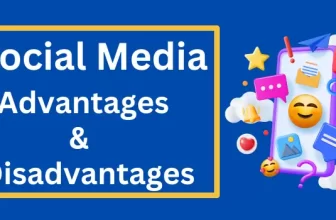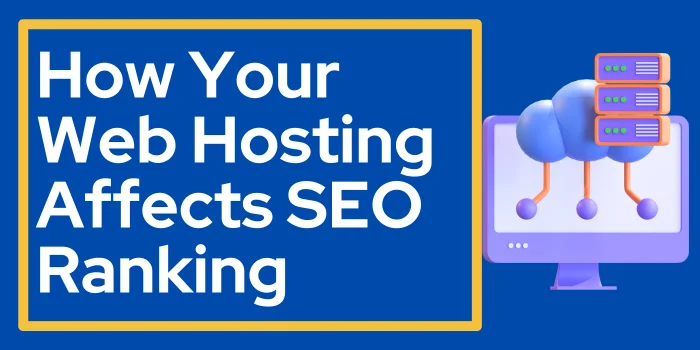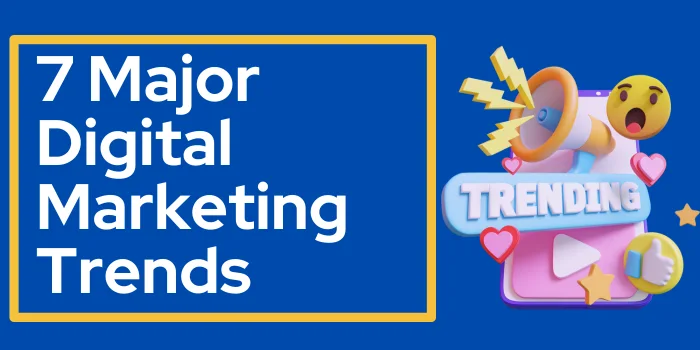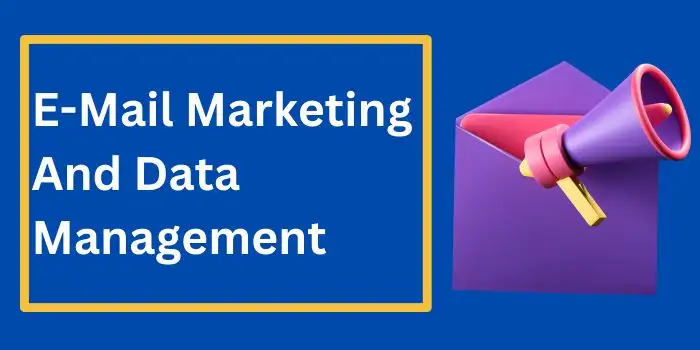
Email marketing and data management are essential components of E-marketing, which is a plan that includes sending promotional messages and advertising your product and other types of business content to target a group with the help of email. The main purpose of email marketing is to promote brands, attract users, and drive sales, which requires proper data management and segmentation.
It involves sending a list of emails to your subscribers with a unique subject line, engaging content, and calls to action words such as visiting our website and making a purchase. E-mail marketing can include a variation of E-mails like promotional offers, newsletters, transactional e-mails, event invitations, and many more. It is a cost-effective and well-planned way to reach and target your specific audience, build a good relationship with them, and drive a beneficial business result.
What Is E-Mail Marketing?
Email marketing is a digital marketing strategy that involves sending promotional messages, advertisements, and other types of commercial content to a targeted group of people via email. The goal of email marketing is to build brand awareness, engage with customers, drive sales, and promote customer loyalty. It typically involves sending a series of emails to a list of subscribers who have opted in to receive emails from a company or organization.
Overall, Email marketing is a powerful digital marketing strategy that can be enhanced through a digital marketing course in Rohini. it can also play a crucial role in your marketing strategy by generating leads, raising brand awareness, fostering connections, or maintaining consumer engagement in between purchases.
Advantages Of E-Mail Marketing
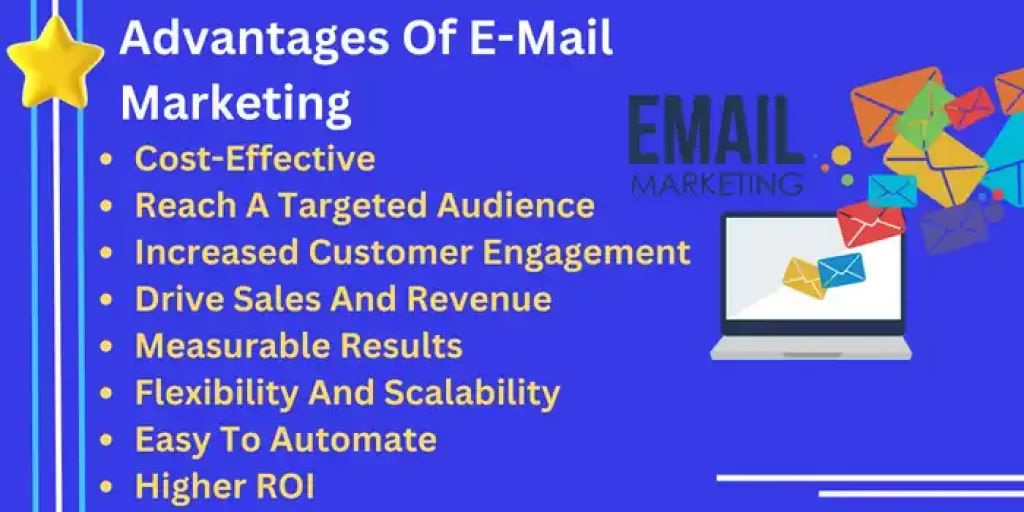
There are several benefits of E-Mail marketing that help you to promote your business. Below we have mentioned some advantages
Cost-Effective:
When considering marketing strategies, it’s important to compare digital marketing vs traditional marketing methods. Compared to traditional marketing methods such as print advertising or direct mail, e-mail marketing is generally more cost-effective. There are typically no printing or postage costs associated with e-mail marketing, making it a cost-efficient option for businesses with limited marketing budgets.
Reach A Targeted Audience
E-mail marketing allows businesses to send messages directly to a targeted audience who have willingly subscribed to receive e-mails, ensuring that the messages are delivered to interested recipients. This targeted approach allows for more personalized and relevant content, resulting in higher engagement and conversion rates.
Increased Customer Engagement
E-mail marketing provides an opportunity to engage with customers on a regular basis, allowing businesses to build relationships, establish trust, and stay top-of-mind with their audience. E-mails can be used to share valuable information, provide updates, offer exclusive promotions, and encourage customer feedback, fostering customer loyalty and retention.
Drive Sales And Revenue
E-mail marketing can be an effective tool for driving sales and revenue. By including compelling calls to action, promotions, and special offers in e-mails, businesses can encourage recipients to make purchases, leading to increased sales and revenue generation.
Measurable Results
E-mail marketing provides detailed metrics and analytics that allow businesses to track and measure the success of their campaigns. This includes open rates, click-through rates, conversion rates, and other key performance indicators (KPIs), which can be used to optimize and improve future campaigns.
Flexibility And Scalability
E-mail marketing is highly flexible and scalable, allowing businesses to send messages to a small or large audience based on their needs and resources. E-mails can be customized and segmented based on various criteria, such as demographics, behavior, or preferences, allowing for highly targeted and personalized campaigns.
Easy To Automate
E-mail marketing can be easily automated using e-mail marketing platforms, allowing businesses to schedule and send e-mails at specific times or based on triggers, such as customer actions or events. Automation can save time and effort while ensuring timely and consistent communication with customers.
Higher ROI
Due to its cost-effectiveness, targeted approach, and ability to drive customer engagement and sales, e-mail marketing has the potential to deliver a higher return on investment (ROI) compared to other marketing channels.
Overall, E-mail marketing offers several benefits and advantages for businesses, making it a popular and effective marketing strategy in the digital era.
Role Of Data Management In E-Mail Marketing
Data management plays a crucial role in e-mail marketing as it involves the collection, organization, storage, and utilization of data to create targeted and personalized e-mail campaigns. The role of data management in e-mail marketing includes:
- Building And Maintaining An Accurate And Updated E-Mail List:
Data management ensures that your e-mail list is properly maintained and regularly updated. This includes managing subscriber information, such as names, e-mail addresses, and preferences, to ensure that your list is accurate and up-to-date.
- Segmentation And Targeting:
Data management allows you to segment your e-mail list based on various criteria, such as demographics, preferences, past purchases, and engagement behavior. This enables you to create targeted e-mail campaigns that are tailored to the specific interests and needs of different segments of your audience.
- Personalization:
Data management enables you to personalize your e-mails by using the subscriber data to insert dynamic content, such as names, locations, or past purchase history, directly into the e-mails. Personalized e-mails create a more personalized experience for the subscribers, making them more likely to engage with the content and take desired actions, such as making a purchase or clicking on a link.
- Automation:
Data management allows you to automate your e-mail campaigns based on predefined triggers or actions, such as welcome e-mails, birthday e-mails, or abandoned cart reminders. Automation helps in delivering timely and relevant e-mails to subscribers, without manual effort, based on their behavior or interactions with your brand.
- Performance Analysis And Optimization:
Data management provides insights into the performance of your e-mail campaigns through analytics, which allows you to analyze and optimize your campaigns for better results. By analyzing data on open rates, click-through rates, conversion rates, and other metrics, you can identify trends, and make data-driven decisions to optimize your e-mail campaigns.
- Compliance With Data Protection Laws:
Data management ensures that you comply with relevant data protection laws, such as GDPR in the European Union or CAN-SPAM Act in the United States. This includes obtaining proper consent from subscribers before collecting and using their data, providing opt-in and opt-out options, securing data, and handling subscriber data responsibly and ethically.
Strategies For Effective Data Management In E-Mail Marketing
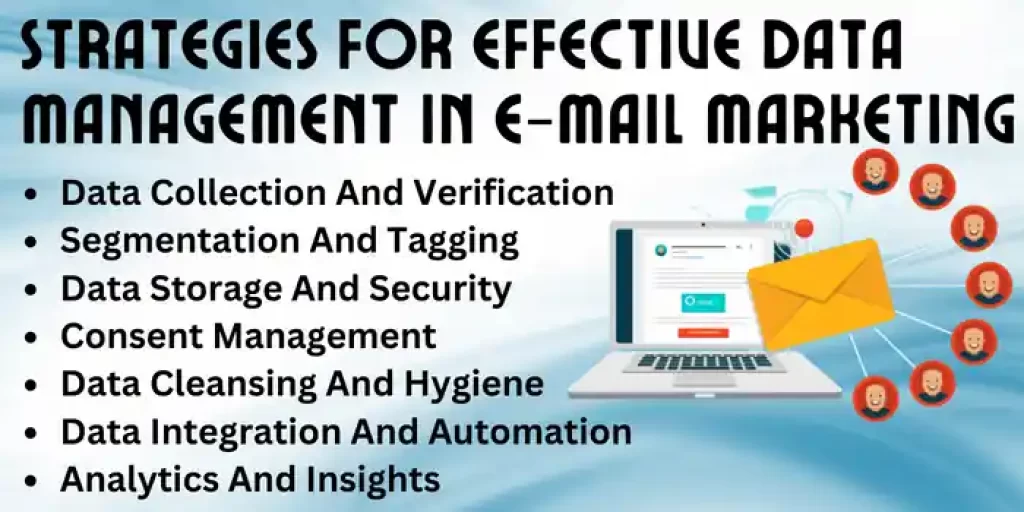
Effective data management is essential for successful e-mail marketing campaigns. Here are some strategies for effective data management in e-mail marketing:
Data Collection And Verification
Collect data from reliable sources and verify it for accuracy. use double opt-in methods to ensure that subscribers have given explicit consent to receive e-mails from you. Regularly update your e-mail list by removing invalid or inactive e-mail addresses to maintain data accuracy.
Segmentation And Tagging
Segment your e-mail list based on relevant criteria, such as demographics, preferences, past purchases, or engagement behavior. Use tagging or labeling to categorize subscribers and create dynamic segments that can be targeted with specific e-mail campaigns.
Data Storage And Security
Store subscriber data securely and protect it from unauthorized access. Follow best practices for data security, such as using encryption, password protection, and firewall, to safeguard subscriber information from data breaches or cyber-attacks.
Consent Management
Ensure that you have proper consent from subscribers before using their data for e-mail marketing purposes. Provide clear opt-in and opt-out options and honor subscriber preferences. Keep records of consent for compliance with data protection laws.
Data Cleansing And Hygiene
Regularly clean and update your e-mail list to remove duplicates, invalid or inactive e-mail addresses, and unsubscribed subscribers. Use data cleansing tools or services to ensure data accuracy and maintain list hygiene.
Data Integration And Automation
Integrate your e-mail marketing platform with other data sources, such as customer relationship management (CRM) systems, e-commerce platforms, or analytics tools, to collect and utilize relevant data for segmentation, personalization, and automation. Automate data processes, such as data collection, segmentation, and tagging, to streamline data management and reduce manual effort.
Analytics And Insights
Use analytics tools to track and analyze the performance of your e-mail campaigns, such as open rates, click-through rates, conversion rates, and other key metrics. Gain insights from data analysis to identify trends, patterns, and areas of improvement, and make data-driven decisions to optimize your e-mail campaigns for better results.
Compliance With Data Protection Laws:
Stay updated with relevant data protection laws, such as GDPR, CAN-SPAM Act, or CASL, and ensure compliance in your e-mail marketing practices. Follow regulations related to consent, data storage, security, and disclosure to maintain legal and ethical data management practices.
Tools and Technologies for E-Mail Marketing and Data Management
There are numerous tools and technologies available that can assist with e-mail marketing and data management. Here are some popular ones:
E-Mail Marketing Platforms:
These platforms provide features for managing e-mail lists, creating and designing e-mails, scheduling and sending e-mails, and tracking e-mail campaign performance. Examples include Mailchimp, Campaign Monitor, Yumm, and Sendinblue.
Customer Relationship Management (CRM) Systems:
CRM systems store and manage customer data, including e-mail addresses, and provide tools for segmentation, personalization, and automation of e-mail marketing campaigns. Popular CRM systems include Salesforce, HubSpot, and Microsoft Dynamics 365.
E-Mail Verification And Validation Tools:
These tools help validate and verify e-mail addresses in your e-mail list to ensure data accuracy and prevent sending e-mails to invalid or inactive addresses. Examples include NeverBounce, ZeroBounce, and BriteVerify.
Data Cleansing And Hygiene Tools:
These tools clean and remove duplicates, invalid or inactive e-mail addresses, and unsubscribed subscribers from your e-mail list to maintain data accuracy and list hygiene. Examples include DataValidation, Clearout, and Xverify.
Marketing Automation Tools:
Marketing automation tools enable you to automate various aspects of your e-mail marketing campaigns, such as data collection, segmentation, tagging, personalization, and scheduling. Examples include ActiveCampaign, Marketo, and Autopilot.
Analytics And Reporting Tools:
These tools provide insights and analytics on the performance of your e-mail campaigns, including open rates, click-through rates, conversion rates, and other key metrics. Examples include Google Analytics, Adobe Analytics, and EmailOctopus.
Data Integration And Api Tools:
These tools allow you to integrate your e-mail marketing platform with other data sources, such as CRM systems, e-commerce platforms, or analytics tools, to collect and utilize relevant data for segmentation, personalization, and automation. Examples include Zapier, PieSync, and Integromat.
What Are The Job Opportunities In E-Mail Marketing & How Much You Can Earn?
Job opportunities in the field of e-mail marketing and data management can vary depending on the size and type of organization, industry, location, and level of expertise. Some common job roles and opportunities in this field include:
E-Mail Marketing Specialist:
This role involves managing and executing e-mail marketing campaigns, including e-mail design, content creation, list segmentation, scheduling, and analysis of campaign performance.
CRM Administrator:
This role involves managing and maintaining customer relationship management (CRM) systems, including data input, data cleansing, data segmentation, and automation of e-mail marketing campaigns.
Marketing Automation Specialist:
This role involves managing and optimizing marketing automation tools and workflows to automate e-mail marketing campaigns, lead nurturing, customer segmentation, and other marketing automation tasks.
E-Mail Deliverability Specialist:
This role involves ensuring that e-mail campaigns are delivered to the recipient’s inbox by managing deliverability issues, monitoring sender reputation, and implementing best practices for e-mail deliverability.
E-Mail Marketing Consultant:
This role involves providing strategic advice and guidance on e-mail marketing and data management practices to clients or organizations, including campaign planning, data segmentation, automation strategies, and best practices for effective e-mail marketing.
Freelance Or Consultant:
There are several career paths available in digital marketing, including working as a Freelance Digital Marketer. Freelancers or consultants can offer specialized services in e-mail marketing and data management, such as e-mail campaign design, content creation, data analysis, CRM setup, and compliance management. This allows businesses to access specialized skills and expertise without having to hire a full-time employee.
Best Practices For E-Mail Marketing And Data Management
Best practices for e-mail marketing and data management are essential to ensure that your e-mail campaigns are effective, compliant, and yield the desired results. Here are some key best practices for e-mail marketing and data management:
- Obtain Consent:
Follow relevant laws and regulations, such as GDPR (General Data Protection Regulation) and CAN-SPAM (Controlling the Assault of Non-Solicited Pornography and Marketing Act), and obtain explicit consent from recipients before sending them e-mails. Use clear and transparent opt-in mechanisms and provide easy ways for recipients to unsubscribe.
- Build A Clean And Segmented Subscriber List:
Maintain a clean and updated subscriber list by regularly cleaning out inactive and invalid e-mail addresses. Segment your subscriber list based on relevant criteria, such as demographics, behavior, and preferences, to send targeted and personalized e-mails that resonate with each segment.
- Create Relevant And Engaging Content:
Craft compelling and relevant content that resonates with your target audience. Use personalized subject lines, preheader text, and sender names to increase open rates. Use engaging and visually appealing designs, concise and persuasive copy, and clear calls to action to encourage recipients to take desired actions.
- Optimize For Mobile:
With the majority of e-mails being opened on mobile devices, it’s crucial to ensure that your e-mails are mobile-friendly. Use responsive design, optimize images and fonts for mobile viewing, and test your e-mails on different devices and email clients to ensure a seamless mobile experience.
- Test And Measure:
Conduct A/B testing to optimize various elements of your e-mails, such as subject lines, content, call-to-actions, and send times. Measure and analyze key performance metrics, such as open rates, click-through rates, conversion rates, and ROI, to evaluate the success of your campaigns and make data-driven decisions for improvement.
- Maintain Data Privacy And Security:
Ensure that your data management practices comply with relevant data protection and privacy regulations. Use secure methods to collect, store, and transmit data, and implement appropriate measures to protect data from unauthorized access, breaches, and misuse.
- Monitor And Manage Deliverability:
Regularly monitor your e-mail deliverability rates and take necessary actions to maintain a good sender reputation. Keep your subscriber list clean, use double opt-in mechanisms, honor unsubscribe requests promptly, and engage with recipients who want to hear from you to maintain a positive sender reputation.
- Keep Up With Industry Best Practices And Trends:
E-mail marketing and data management are constantly evolving fields. Stay updated with industry best practices, trends, and technologies, and adapt your strategies accordingly to stay ahead of the competition and achieve better results.
Is It Legal To Send Marketing E-Mails Without Obtaining Consent From Recipients?
No, it is generally not legal to send marketing e-mails without obtaining consent from recipients, as per laws such as GDPR, CAN-SPAM, and CASL.
How Can I Ensure Data Privacy And Security In My E-Mail Marketing Campaigns?
To ensure data privacy and security in your e-mail marketing campaigns, you can implement measures such as using secure methods for data collection, storage, and transmission, regularly cleaning your subscriber list, being transparent about data usage and privacy policies, and providing options for subscribers to manage their data and privacy preferences.
Conclusion
E-Mail marketing and data management are Important factors of digital marketing. It allows business to target their specific audience and be relevant and have good relationships with customers. Effective use of these tools and strategies can drive customer engagement and increase conversions.

